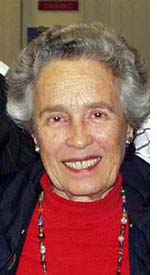|
By Eileen Wingard
 SAN DIEGO, California—The pages devoted to the great 20th century cellist, Gregor Piatigorsky are alone sufficient to make this book worthwhile. Those sections confirm the big-heartedness of this marvelous musician who served as Lev Aronson’s teacher in Berlin and, later, as his rescuer and mentor. SAN DIEGO, California—The pages devoted to the great 20th century cellist, Gregor Piatigorsky are alone sufficient to make this book worthwhile. Those sections confirm the big-heartedness of this marvelous musician who served as Lev Aronson’s teacher in Berlin and, later, as his rescuer and mentor.
Piatigorsky assisted Aronson when he immigrated to the US and helped the Holocaust survivor establish an illustrious career as principal cellist of the Dallas Symphony. Aronson also became an excellent teacher, instructing cellists Ralph Kirshbaum and Lynn Harrell, two of the top artists of their generation.
I was acquainted with Piatigorsky when he was at the height of his fame, living in a beautiful home in Beverly Hills with his wife, a member of the Rothschild family, and heading the Young Musicians Foundation, an organization which continues to sponsor yearly competitions and the Debut Orchestra, a professional ensemble of young performers.
Piatigorsky was a tall man with massive hands. When he held the cello, it looked as if he were holding a violin. He played with remarkable ease and expressiveness.
My favorite photo of the great cellist is of his presenting my sister, violinist Zina Schiff, with the first prize at the YMF competition. His kindness shone through in his warm smile and loving hug.
In the Brent biography of Lev Aronson, the story unfolds with Lev’s birth in Germany where his parents were enrolled in a fashion school to hone their skills as tailor and seamstress before returning to their home in Mitava, Latvia. Mitava, on the shores of the Baltic Sea, was a connecting point between Vilna, Vitebsk and Riga.
During World War I, the Aronson family was among 40,000 Jews deported east, crowded into cattle cars. Lev’s family landed in Voronezh, 500 kilometers from Moscow. There, the young boy began cello lessons and there he witnessed his first pogrom.
Go to the top of next column
|
|
After World War I, the Aronsons returned to Latvia, this time settling in Riga, a city hospitable to the Jews, who comprised some 11% of the population. Lev’s parents prospered. The talented boy was given cello lessons. His first job was playing at a silent movie house.
At the age of 16, Lev was admitted to the University of Berlin to study law, but he soon got diverted into music, studying first in Leipzig with Klengel, then, finally, in Berlin with Piatigorsky. By the beginning of World War ll, Lev had a successful career, touring and playing principal cello in orchestras. He was the proud owner of two magnificent cellos, one by Nicholas Amati and one by the German maker, Mathias Neuner. These were both confiscated by the Nazis who, by 1941, had occupied Riga.
The book’s compelling narrative describes Lev’s experiences in the Riga Ghetto followed by his imprisonment in Stutthof, a concentration camp thirty-five kilometers east of Danzig. As an able bodied man, he was sent to forced labor in ship building. Before liberation, he survived a death march through Pomerania.
After liberation, when Lev was finally able to find an instrument in a deserted music conservatory in Lautenberg, East Germany, he could not play any more. During the four years without a cello, he lost his calluses and his fingertips were bleeding and in pain. He joined a troupe of entertainers, contributing piano accompaniments.
From a chance encounter with a friend from Riga, now an officer in the Russian army in charge of “liberated material,” a cello was located, albeit in terrible condition. When Lev finally arrived in the US, he owned two mediocre cellos. Piatigorsky, hearing that his pupil was in New York, took a train from Philadelphia, bringing along a French cello for Lev. Piatigorsky continued to help his former student get established.
As principal of the Dallas Symphony, Lev had the use of a Stradiverius cello for several years. Later, with Piatigorsky’s assistance, he managed to finance the purchase of a Goffriller, the cello he played until the end of his life.
The 218 page book gives a well-written account of a fascinating life in Europe during the early half of the turbulent 20th century. It is particularly meaningful for those interested in Holocaust survivor stories, for music lovers, and for musicians, especially cellists.
|

